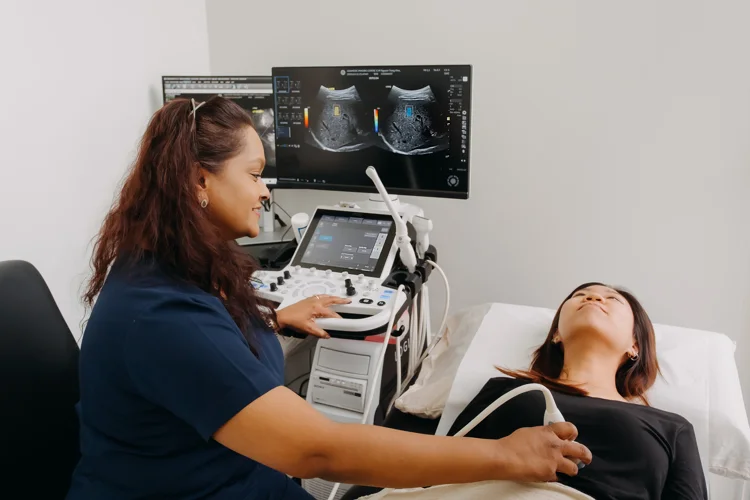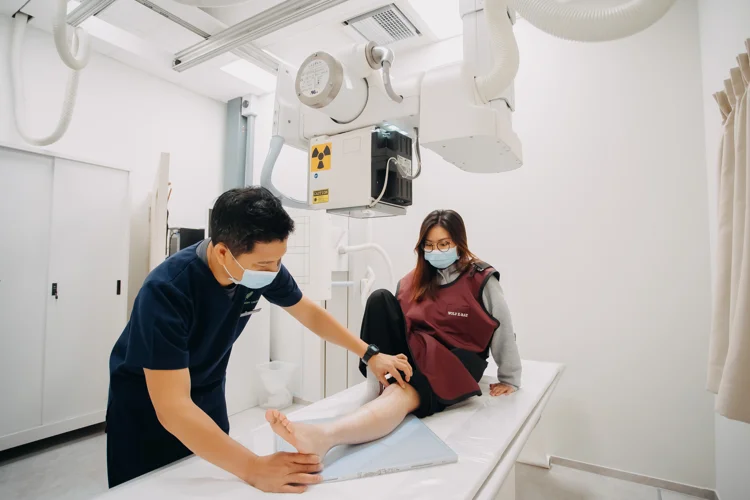How Long Does an STD Test Take?
Getting tested for sexually transmitted diseases (STDs) is a simple process that typically requires less than 30 minutes to provide a sample. Blood and urine tests are quick, while swab tests might take slightly longer depending on the area being tested. The overall duration of an STD test depends on the type of test and the infection being screened. At healthscreening.sg, our team of male and female doctors ensures a comfortable and professional testing experience tailored to your needs.

STD Testing Process
Undergoing an STD test is a straightforward process generally consisting of the following steps:
- Consultation: Your doctor will discuss your symptoms, sexual history, and any concerns you may have. This conversation is entirely private and confidential.
- Sample Collection: Depending on the recommended tests, samples are collected via blood, urine, or swabs from specific areas such as the genital region, throat, rectum, or open sores and rashes.
- Laboratory Analysis: Once collected, the samples are sent to a laboratory for analysis.
- Results: Results are generally available within a few days. Rapid tests, however, can provide same-day results, allowing for quicker peace of mind or action if needed.

Factors Affecting Duration of Test
Several factors can impact how quickly you receive your STD test results:
- Type of STD Screened For: Certain infections may require more complex testing and longer processing times.
- Testing Method Utilised: Rapid tests provide quicker results compared to standard laboratory tests. However, if results are positive, a confirmatory test may be recommended. Rapid tests can deliver faster results but may require confirmation through standard laboratory testing if positive.
- Laboratory Turnaround Time: The speed at which a lab processes results can vary depending on its capacity and the volume of tests being analysed.

Average Turnaround Time for STD Test Results
Below is an overview of common STD tests and their typical turnaround times:
| STD Type | Tests | Average Time for Results |
|---|---|---|
| HIV | Blood Test | Standard test: 2 to 5 working days |
| Syphilis | Blood Test | Standard test: 2 to 5 working days |
| Hepatitis B and C | Blood Test | Standard test: 2 to 5 working days |
| Chlamydia | Urine Test, Swab Test | Standard test: 1 to 3 working days |
| Gonorrhoea | Urine Test, Swab Test | Standard test: 1 to 3 working days |
| Herpes | Blood Test, Swab Test | 1 to 7 working days |
| HPV | PAP Smear, DNA Test | Varies on test utilised |
| Trichomoniasis | Swab Test | 1 to 7 working days |
Keep in mind that these timeframes are approximate and may vary depending on the clinic or laboratory. Always consult your doctor for specific details regarding testing times and the window period for the STD you are testing for, as these factors can affect the accuracy of the results.
Receiving Test Results
Once your results are ready, your doctor will share them securely via phone calls, emails, or patient portals. If rapid results are available, you may be able to discuss them on the same day. It’s important to review your results with your doctor and arrange any necessary follow-up, especially if they are positive.

Summary
STD testing is a vital part of maintaining sexual health, enabling early detection and treatment to prevent the spread of infections. Understanding the process and time taken for STD testing can ease concerns and help you make informed decisions about your health. If you’re considering getting tested, healthscreening.sg is here to provide a professional, supportive, and confidential testing experience. Schedule your appointment today to take charge of your sexual health.
Why Choose Us?








Navigate Easy With Google Maps
Health Screening Singapore
(Anson House)
Health Screening Singapore
(Camden Medical Centre)
Frequently Asked Questions (FAQ)
The time to receive STD test results depends on the type of test, the method used, and the laboratory’s processing time.
The window period for STDs varies. HIV typically takes 1-3 months to show up, while chlamydia and gonorrhoea can be detected within 1-6 days. Syphilis may take 3-6 weeks, and herpes 4-6 weeks.
Chlamydia and gonorrhoea can sometimes be detectable within 2 days, but waiting at least a week ensures more accurate results.
Most STDs require waiting 1-2 weeks after exposure for testing. For HIV, waiting up to 4 weeks may provide more reliable results.
Herpes and HIV have no cure and remain in the body for life, though their symptoms can be managed effectively. While HPV infections often clear up on their own, certain high-risk strains may persist and require monitoring or treatment.
Symptoms appear at different times: chlamydia (1-3 weeks), gonorrhoea (1-14 days), syphilis (10 days to 3 months), herpes (2-12 days), and HIV (within a few weeks). Some STDs may not show symptoms at all for days, months or even years.
Yes, urine tests are commonly used to detect chlamydia and gonorrhoea.
Avoid urinating 1-2 hours before a urine test. Do not take antibiotics or use vaginal creams or douches before testing, as they can interfere with results.
Testing after each new sexual partner can help to ensure early detection and treatment of any potential infections. Additionally, discussing sexual health and considering testing with a partner before starting a new relationship can help build trust and promote mutual well-being. The need for testing may vary based on the sexual history of both partners, so consulting a doctor for personalised advice is always a good practice.
HIV is considered the most challenging to treat due to its incurability, requiring lifelong antiretroviral therapy to manage the condition effectively.
Most STDs do not resolve without treatment. Professional medical intervention is required to prevent complications and transmission.
STDs can remain asymptomatic for varying lengths of time: weeks to months for chlamydia and gonorrhoea, years for syphilis, indefinitely for herpes, and months to years for HPV.
The detection window varies. HIV may take 1-3 months, chlamydia and gonorrhoea 1-6 days, syphilis 3-6 weeks, and herpes 4-6 weeks.
Common symptoms include unusual discharge, painful urination, sores or warts, genital itching, and testicular pain.
Condoms significantly reduce the risk of most STDs but are less effective for infections spread through skin-to-skin contact, such as herpes and HPV.
